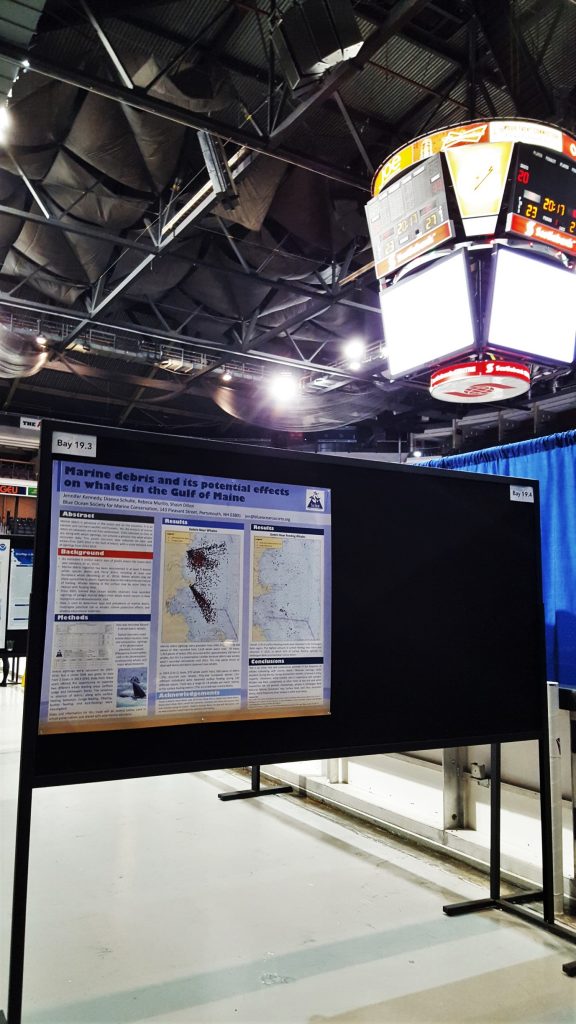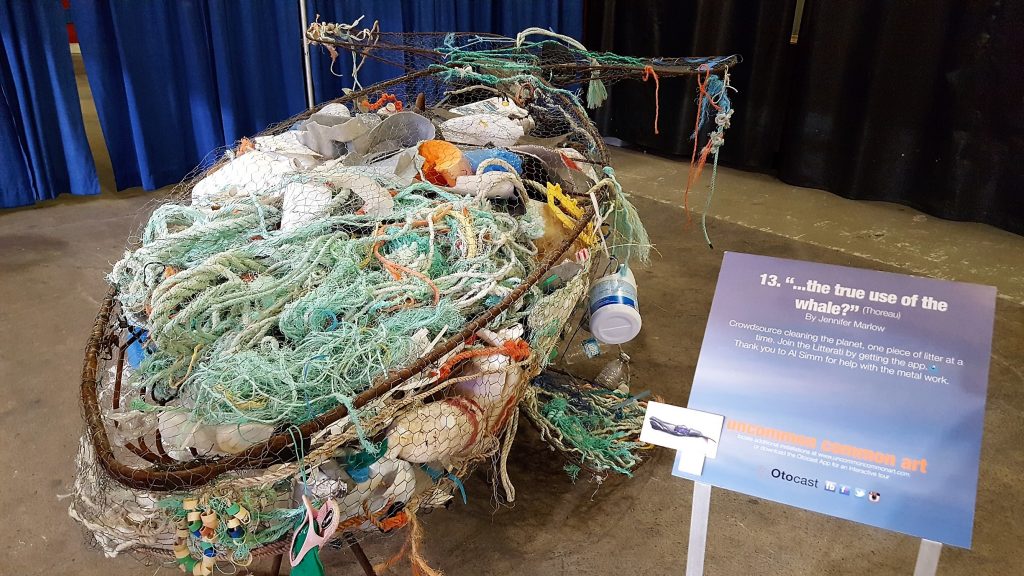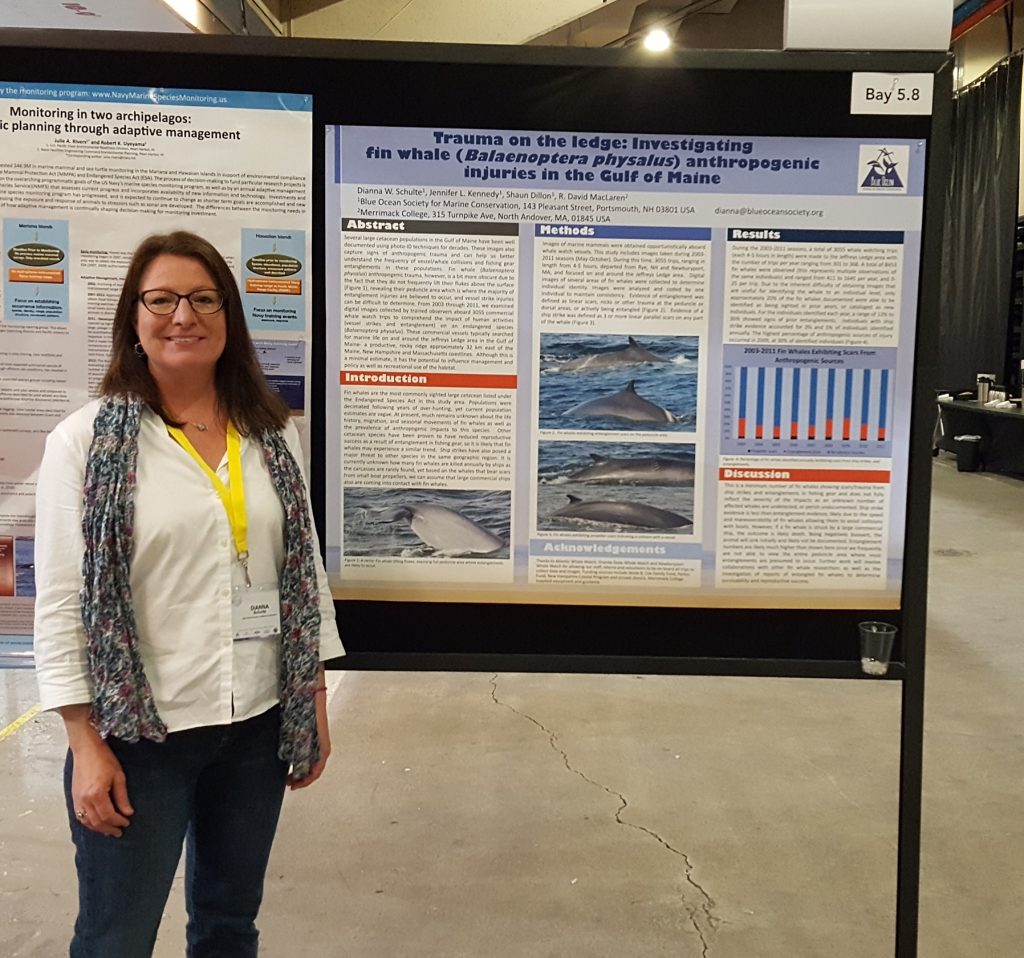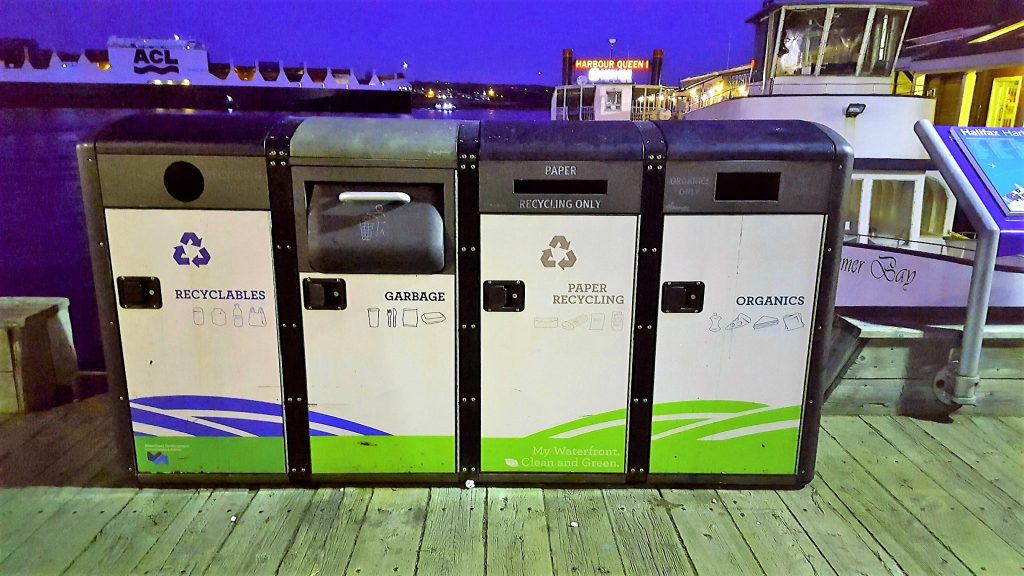Energizing, exciting, and depressing… these are all words that describe last week’s 22nd Biennial Conference on the Biology of Marine Mammals in Halifax, Nova Scotia. More than 1,500 people from 60 countries attended the conference, which featured 5 days of presentations on 17 different themes, including marine mammal communication, health, population abundance, outreach, education and conservation.
This is the 5th biennial marine mammal conference our co-founder Dianna and I have attended. This one had much more of a conservation and communication theme than past conferences we’ve attended. Many speakers stressed the importance of scientists communicating their work – not just to other scientists, but to the public. This communication is necessary for conservation.
Right Whales and Monk Seals
Many talks focused on endangered species, and made me reflect upon the devastating impacts humans have had on this planet. One example is the North Atlantic right whale, which we see on our whale watches occasionally. Only about 450 right whales remain, and only 100 of those are breeding females. During the conference, yet another right whale was found dead off Cape Cod. If we don’t help right whales now, they could go extinct in only about 20 years.
On the more positive side, we learned about efforts to protect the Mediterranean monk seal. This species was on the brink of extinction due to hunting, coastal development, habitat loss and entanglement. Through dedicated research and education efforts, that population is now increasing, although it is still endangered. We can only hope that things turn around for right whales as well.
New Technology
In addition to learning about marine mammal biology and behavior, we learned about the latest technology used to study marine life. This included the use of drones to document whale health and even take breath samples, and the use of face recognition technology to help identify individual whales more quickly. One of my favorite presentations discussed the amazing adaptations of the organisms that attach to whales (e.g., remoras, barnacles), which were studied using video cameras attached to blue and humpback whales.
Blue Ocean Society’s Work
During the conference, we presented our work investigating fin whale entanglements and ship strikes, and humpbacks feeding near marine debris. Our results came from data collected on whale watches since 2005. We’re looking forward to expanding these initial studies, presenting more of this work, and sharing the results with you on this blog!
We also saw some former Blue Ocean Society interns (3 of which were also presenting at the conference) and spent some lunchtimes and after hours brainstorming with colleagues about future projects.
It will take some time to digest all the information we gained from the hundreds of presentations. We look forward to incorporating our new knowledge into our educational programs, sharing it with you on our whale watches, and developing new projects that will help protect our local marine mammals.
Learn More:












